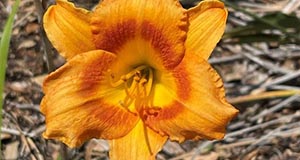Abstract
In this rapidly urbanizing world, landscape plants serve as a convenient pathway for individuals to engage with nature. Due to Florida's subtropical climate, a vast array of diverse plant species is commonly used in home landscapes. However, it is important to note that many landscape plants can be toxic if consumed, posing risks to small children, pets, and even livestock such as cattle, horses, or sheep. These plant species can still be utilized in the landscape, but it is important to understand which species are toxic to prevent accidental exposure, particularly in environments where small children or pets could inadvertently come into contact with them. This EDIS publication informs home gardeners, pest management professionals, and other plant enthusiasts of some of the most common plants in home landscapes in Florida, focusing particularly on poisonous species that could potentially cause harm if ingested.
References
Gilman, E.F., D. G. Watson, R. W. Klein, A. K. Koeser, D. R. Hilbert, and D. C. McLean. 2018. “Nerium oleander: Oleander.” ENH-571. University of Florida Institute of Food and Agricultural Sciences. https://edis.ifas.ufl.edu/publication/ST412
Goldfarb, J., N. Pesin, and E. Margolin. 2019. “Gardening and Dilated Pupils: An Interesting Case of Anisocoria from Brugmansia versicolor.” Canadian Journal of Ophthalmology 54 (2): 59–61. https://doi.org/10.1016/j.jcjo.2018.05.004
Haynes, B. E., H. A. Bessen, and W. D. Wightman. 1985. “Oleander Tea: Herbal Draught of Death.” Annals of Emergency Medicine 14 (4): 350–353. https://doi.org/10.1016/S0196-0644(85)80103-7
Henderson, L. 1992. “Oleander: An Invasive Riverside Shrub from the Mediteranean.” Veld & Flora 78 (3): 84–86.
Kaplan, R. 2001. “The Nature of the View from Home: Psychological Benefits.” Environment and Behavior 33 (4): 507–542. https://journals.sagepub.com/doi/abs/10.1177/00139160121973115
Kerchner, A., and Á. Farkas. 2020. “Worldwide Poisoning Potential of Brugmansia and Datura.” Forensic Toxicology 38: 30–41. https://doi.org/10.1007/s11419-019-00500-2
Koca, I., and A. F. Koca. 2007. “Poisoning by Mad Honey: A Brief Review.” Food and Chemical Toxicology 45 (8): 1315–1318. https://doi.org/10.1016/j.fct.2007.04.006
Manole, S. 2018. “Improvement of Daylilies (Hemerocallis L.) in the Republic of Moldova.” Lucrări Ştiinţifice. Seria Horticultură: 83–90.
Mitchell, R., and F. Popham. 2008. “Effect of Exposure to Natural Environment on Health Inequalities: An Observational Population Study.” The Lancet 372 (9650): 1655–1660. https://doi.org/10.1016/S0140-6736(08)61689-X
Northrop, R. J., M. G. Andreu, M. H. Friedman, M. McKenzie, and H. V. Quintana. 2010. “Cycas revoluta, Sago Palm: FOR 254/FR316, 5/2010.” EDIS 2010 (4). https://doi.org/10.32473/edis-fr316-2010
Ntalo, M., K. E. Ravhuhali, B. Moyo, O. Hawu, and N. H. Msiza. 2022. “Lantana camara: Poisonous Species and a Potential Browse Species for Goats in Southern Africa—A review.” Sustainability 14 (2): 751. https://doi.org/10.3390/su14020751
Samanta, A. K., and K. U. Kumar. 2005. “Poisoning by Glory Lily-A Case Report.” Journal of Indian Academy of Forensic Medicine 27 (3): 188–189.
Sharma, O. P., H. P. S. Makkar, and R. K. Dawra. 1988. “A Review of the Noxious Plant Lantana camara.” Toxicon 26 (11): 975–987. https://doi.org/10.1016/0041-0101(88)90196-1
Thomson, N. 2007. “Poisonous and Invasive Plants in Australia: Enabling Consumers to Buy Safe Plants.” WWFAustralia Issues Paper. WWF-Australia. Archived January 10, 2024, at https://web.archive.org/web/20140110103830/http://awsassets.wwf.org.au/downloads/sp127_poisonous_and_invasive_plants_in_australia_1jul07.pdf
Ulrich, R. S. 1984. “View through a window may influence recovery from surgery.” Science 224 (4647): 420–421. https://doi.org/10.1126/science.6143402
Vélez-Gavilán, J. 2022. “Nerium oleander (oleander).” CABI Compendium. https://doi.org/10.1079/cabicompendium.36220

This work is licensed under a Creative Commons Attribution-NonCommercial-NoDerivatives 4.0 International License.
Copyright (c) 2025 UF/IFAS

